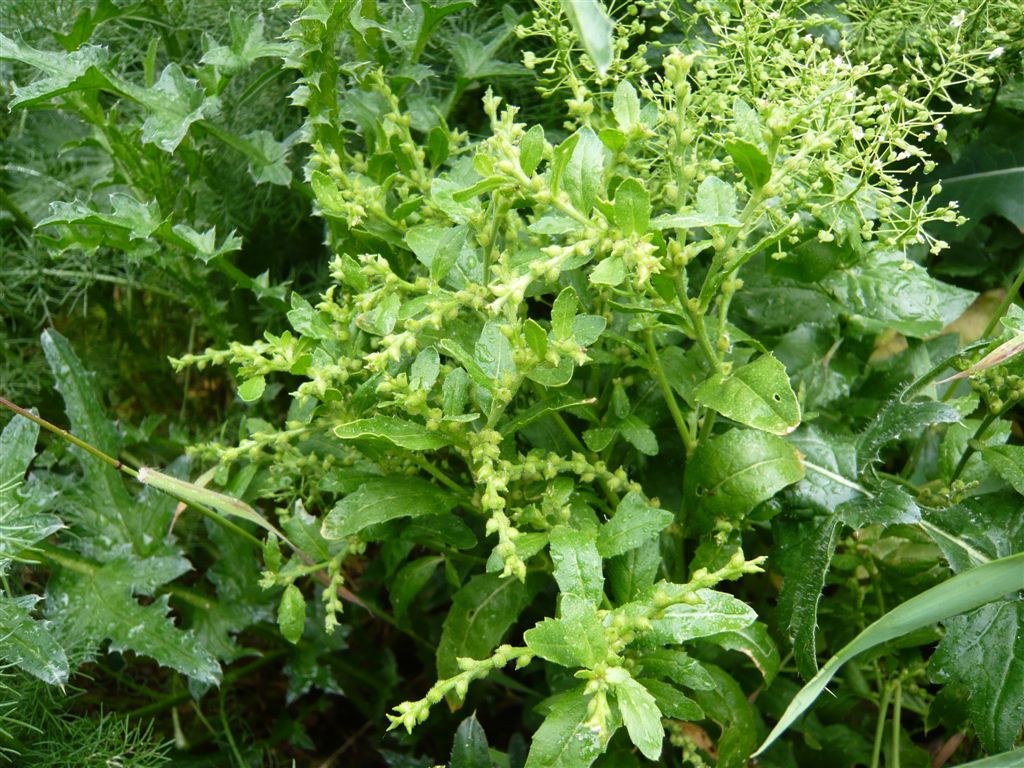Syrian Mustard
(Euclidium syriacum)

Description
Euclidium syriacum (Linnaeus) W. T. Aiton in W. Aiton and W. T. Aiton, Hortus Kew. 4: 74. 1812., Plants scabrous throughout, trichomes to 1 mm. Stems often ascending, (rigid), usually branched basally and near middle, (0.4-)1-4(-4.5) dm. Basal leaves similar to cauline. Cauline leaves petiolate [(0.2-)0.5-2(-2.5) cm] or (distal) sessile or subsessile; blade oblong, oblong-lanceolate, or elliptic, (1-)1.5-7(-9) cm - (3-)7-20(-30) mm (smaller distally), base cuneate, margins usually entire, dentate, or repand, rarely pinnatifid, apex acute or obtuse. Fruiting pedicels appressed to rachis, 0.5-1(-1.2) mm (ca. 1/2 as wide as fruit). Flowers: sepals 0.6-0.9 - 0.2-0.4 mm, sparsely pubescent; petals 0.9-1.3 - 0.1-0.2 mm, claw 0.4-0.6 mm; filaments 0.5-0.8 mm; anthers 0.1-0.2 mm. Fruits erect, 0.2-0.3 cm - 1.5-2 mm, 2-seeded; replum expanded, to 1.5 mm wide basally, narrowed to apex; style curved away from rachis, subconical, 1-1.8 mm, sparsely pubescent. Seeds 1.3-1.7 - 0.8-1.2 mm. 2n = 14. Flowering May-Jun. Waste places, roadsides, flats; 0-2500 m; introduced; Calif., Colo., Idaho, Mass., Oreg., Utah, Wash., Wyo.; Europe; Asia; introduced also in Australia.
Taxonomic tree:







